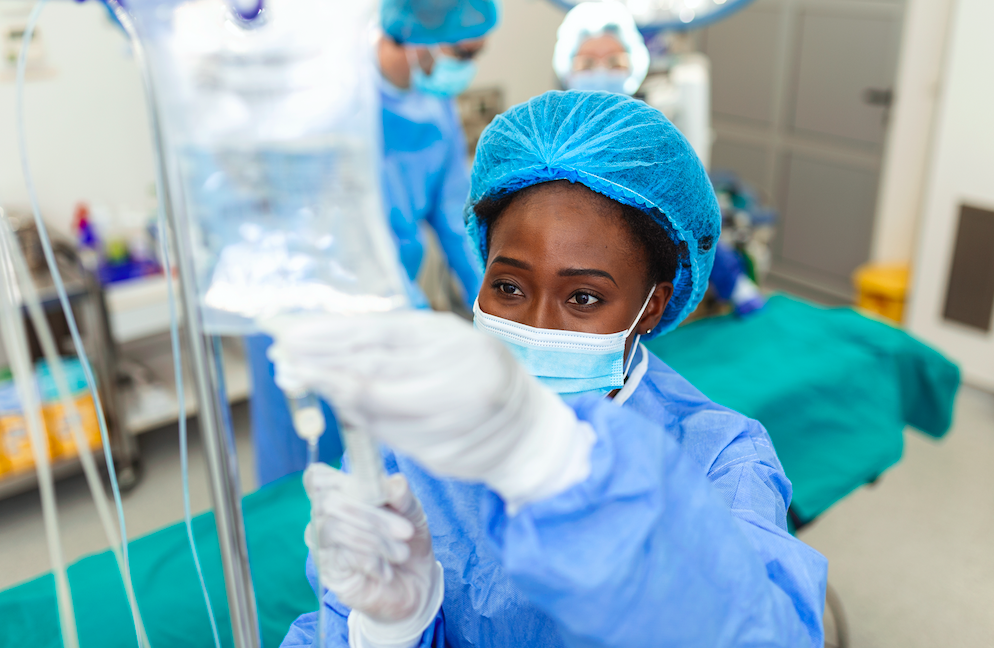
A fierce battle is unfolding over who gets to make the incision on women’s bodies in Kenya.
At the centre of this dispute is the uterus. Should clinical officers continue to perform caesarean sections, or should this remain the turf of doctors?
The fight is not just about qualifications; it’s about power and control.
On Thursday, obstetricians and gynaecologists – doctors who specialise in women's reproductive health – angered clinical officers through a strongly worded joint statement accusing COs of making caesarian sections unsafe in Kenya.
“In recent times, there have been increasing demands by clinical officers and other allied health care providers to independently conduct surgical procedures,” the doctors wrote. “The independent performance of such procedures by cadres without the requisite surgical training, accreditation, and oversight directly endangers the lives of mothers and newborns.”
Clinicians have responded by asking doctors to table any evidence of malpractice and to apologise.
“The burden of proof lies squarely with KMA and KOGS (the Kenya Medical Association and Kenya Obstetrical Gynaecological Society). And in the absence of any evidence thereto they should withdraw the letter and apologise to the COs fraternity,” said Fenwick Muthangya, a clinical officer and the President of the Society of Non-Physician Anaesthetists of Africa.
Clinical officers were officially allowed to conduct caesarean sections, the commonest operations in Kenya, in 2008 through a circular from the then Ministry of Medical Services.
The Director of Medical Services Dr Francis Kimani declared that the Ministry of Health had officially recognised the skills and competencies of Clinical Officers specialised in Reproductive Health.
“Their training started at KMTC in the year 2002 so as to address various obstetric emergencies, especially where there is no Obstetrician/Gynaecologist,” he said in a letter to all Provincial Directors of Medical Services.
“Under the ‘transfer of skill’ policy, clinical officers in reproductive health can perform the following procedures: caesarean section, bilateral tubal ligations, dilation and curettage, manual vacuum aspiration (MVA), Macdonald stitch insertions, running of GOPC/High Risk Clinics, conducting ward rounds, and any other Reproductive Health duties assigned to them by the Obstetrician/Gynaecologist,” Dr Kimani said.
“This will go a long way in reducing maternal mortality and improving maternal health.”
Clinical officers trained in reproductive health have carried out these procedures for over two decades now.
Fast forward to 2025, and the Kenya Medical Association (KMA) and the Kenya Obstetrical and Gynaecological Society (KOGS) have raised an alarm.
KMA and KOGs are professional lobbies for doctors. In their joint statement on Thursday, they claim that clinical officers conducting caesarean sections independently pose a serious threat to maternal health.
“Surgery, particularly obstetric and gynecologic surgery, requires highly specialised training, rigorous and continuous competency assessments, and strict adherence to globally accepted medical and surgical safety standards,” read the statement signed by Dr Kireki Omanwa, the president of KoGs, and Dr Diana Marion, the secretary general of KMA.
“The independent performance of such procedures by cadres without the requisite surgical training, accreditation, and oversight directly endangers the lives of mothers and newborns.”
The two lobbies argue that Kenya’s maternal mortality crisis could worsen if “unregulated” surgical practices are allowed to continue. “Any expansion of these roles must be guided by robust evidence, structured training, and regulatory frameworks—not political lobbying or workforce shortages,” they insist.
KMA and KOGS anchored their position in medical ethics, emphasising the principle of “Primum non nocere”: First, do no harm. They argue that no healthcare decision should be made at the expense of patient safety. They called for “structured, evidence-based” policies.
KMA and KOGS said Kenya has made significant strides in reducing maternal and neonatal mortality. They cautioned: “Compromising surgical safety through unregulated practices will only erode the gains we have made.”
However, there is no study published in Kenya or outside that links clinical officers to adverse maternal outcomes.

Doctors accuse clinical officers of making C-Section unsafe, but evidence shows the opposite.
He used both quantitative and qualitative approaches for data collection in Muranga, Nairobi, Kakamega, Kisii, Mombasa, Machakos and Nakuru counties.
“There was significant statistical evidence of competence in performing task shifted obstetrical and gynecological procedures,” Kijungu noted.
His study is titled: “Performance of trained clinical officers in reproductive health service delivery through task Shifting: Opportunities and its challenges in Kenya.”
He notes there
was reduced maternal mortality rate as reflected in the 2014 Kenya Demographic and
Health Survey, increased number of hospital deliveries and good delivery
outcomes.
In their statement, the KMA and KOGs urged the Ministry of Health to focus on training more specialists rather than “lowering” the threshold for surgical practitioners.
“Invest in training more medical specialists and
medical officers to meet the growing demand for surgical services while
ensuring patient safety is not compromised.”
Currently there are about 700 gynaecologists working in both in public and private health facilities, according to the Kenya Medical Practitioners and Dentists Council.
This makes it nearly impossible to have fully qualified obstetricians in every hospital. Clinical officers argue that they are the next best option to bridge this gap.
KMA and KOGS called upon the Ministry of Health, Parliament, and stakeholders to prioritise structured team-based approaches where all professionals operate within their regulated scope of practice.
They also proposed the facilitation of formal medical training programmes for clinical officers who wish to become full-fledged surgeons.
C-sections
are the most lucrative area of maternity care. In 2020/2021, the National Health
Insurance Fund (NHIF) reimbursed hospitals Sh2.5 billion for CSs done in one
year. They accounted for 44 per cent of all NHIF maternity costs of Sh5.6 billion
that year.
However, obstetrics and gynaecology remains one of the most frequently sued specialties in Kenya.
Of all complaints lodged with the KMPDC between 2019-23, the highest – 26 per cent – relate to obstetrics and gynaecology.
The next area attracting more complaints is general surgery (12 per cent of all cases) and internal medicine at 11 per cent.







